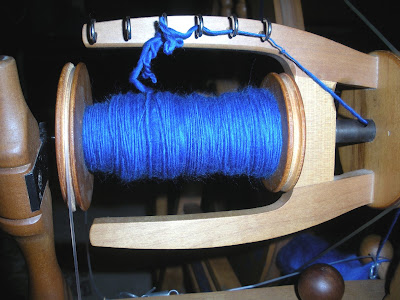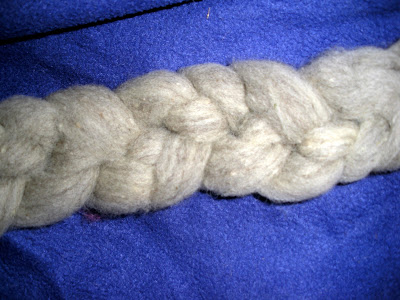 |
| My newest project: thick merino. (The colors are totally off though) |
The history of merino sheep is actually pretty neat. In the 18th and early 19th Centuries, all merinos were owned by the Spanish crown. To sell a sheep to anyone else was considered treason and the punishment was death. In the 19th Century, they gradually loosened the restrictions, and they are pretty ubiquitous today.
I haven't decided what I am going to do with this yarn yet, but it is going to be a thick two ply yarn, with one skein of blue and one of black.
 |
| Merino top from Delly's Delights Farm in Louisa, VA. This is closer to what the color actually looks like |
 |
| Same as above, in black. |
Because I might be teaching more spinning in the future, I decided to get some ugly, cheap "learning" wool that I can give to students. I got two pounds of this:
 |
| 4 oz. of "domestic gray wool" roving from The Woolery. |
The main question was how to store all of that wool. It came in bags, but just stuffed in there - recipe for tangles.
Some of it I wound into balls, just like I would do with yarn.
 |
| 4 oz. roving ball (and Sandy, looking for attention) |
But I had also seen roving braided, and wanted to try. It looks better than the ball, gets more air, and I think is a bit more compact.
The first thing to know about the braiding is that it isn't a brain, it is a crochet chain. That means that if you want to get the wool, you just have to tug, and it will come undone. The second thing to know is that I am pretty sure the other braids I have seen were only two ounces, because my braid was something like 6 feet long. It think I got the hang of it though.
What do you think?
 |
| "braid" of roving: closeup. |















